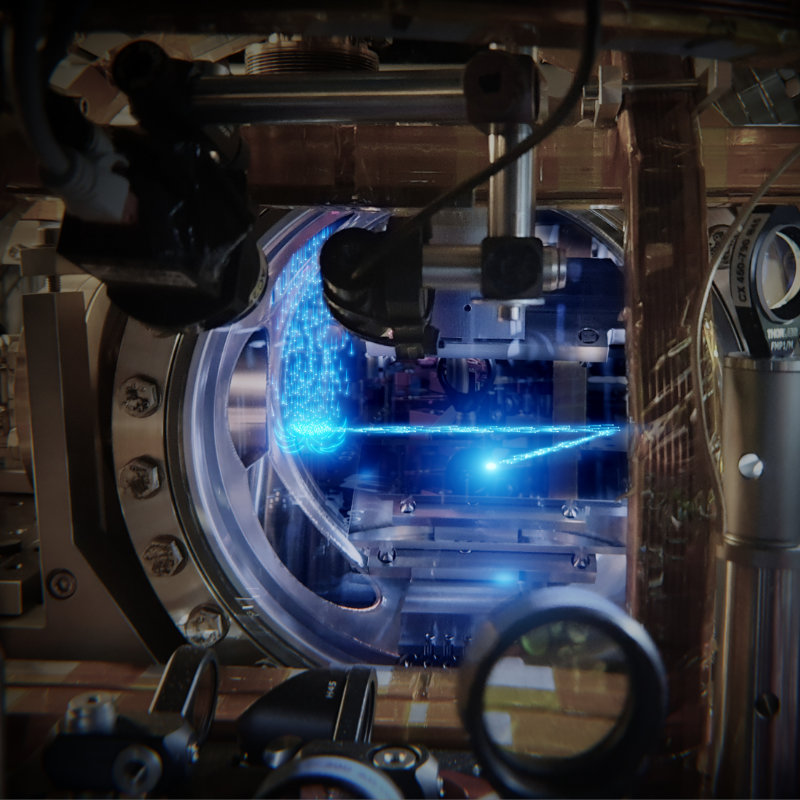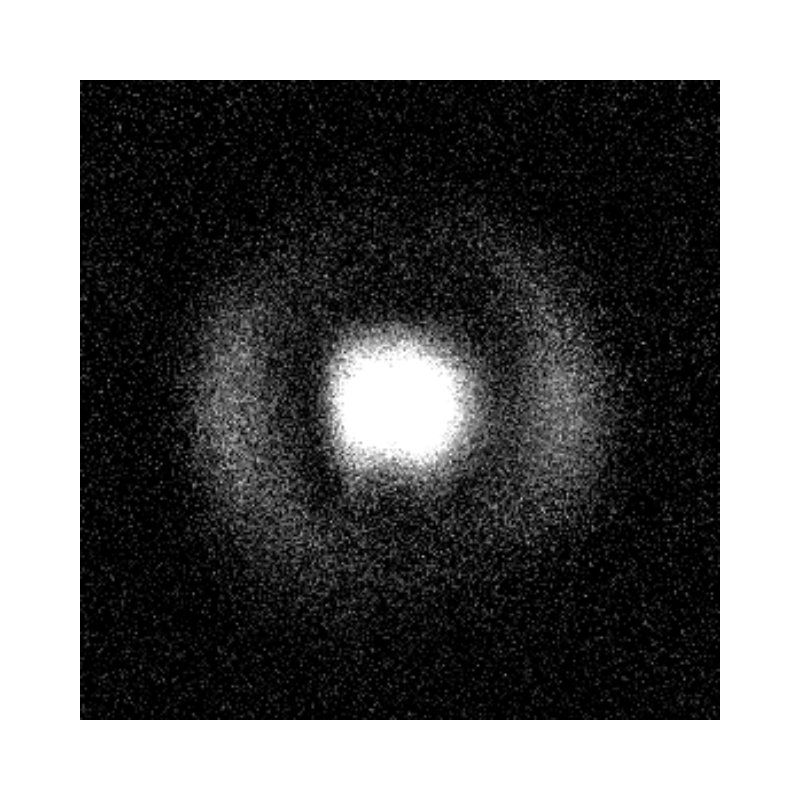19th July 2024
Our poster Coherent Three-Photon Excitation of the Strontium Clock Transition won a Prize for Outstanding Poster at the 28th International Conference on Atomic Physics.
1st July 2024
Our proposal paper written together with the group of Tanya Zelevinsky is now published in Physical Review Research.

11th June 2024
With the Florian Schreck group we demonstrated a coherent three-photon transfer between ground- and excited clock states in ultracold strontium.
26th December, 2023
Our paper on BBR shifts in the strontium dimers has been published in Physical Review Letters.
6th July 2023
Our paper on the magnetic field stabilization system in Florian Schreck's RbSr setup is out now.

28th March 2023
At the Tanya Zelevinsky lab we demonstrated a molecular lattice clock operating between the least- and most-deeply bound states of the strontium dimer.
Junyu He, Benjamin Pasquiou, Rodrigo Gonzalez Escudero, Sheng Zhou, Mateusz Borkowski, Florian Schreck
Emily Tiberi, Mateusz Borkowski, Brandon Iritani, Robert Moszynski, Tanya Zelevinsky
Physical Review Research 6 (3), 033013 (2024)
Brandon Iritani, Emily Tiberi, Wojciech Skomorowski, Robert Moszynski, Mateusz Borkowski, Tanya Zelevinsky
Physical Review Letters 131 (26), 263201 (2023)
Mateusz Borkowski, Lukas Reichsöllner, Premjith Thekkeppatt, Vincent Barbé, Tijs van Roon, Klaasjan van Druten, Florian Schreck
Review of Scientific Instruments 94, 073202 (2023)
Mateusz Borkowski
Phys. Rev. A 107, 063101 (2023)
Kon H. Leung, Brandon Iritani, Emily Tiberi, Iwona Majewska, Mateusz Borkowski, Robert Moszynski, Tanya Zelevinsky
Physical Review X 13 (1), 011047 (2023)
Featured in Physics article New Accuracy Record for Molecular Lattice Clock
Maciej B. Kosicki, Mateusz Borkowski, Piotr S. Żuchowski
New Journal of Physics 22 (2), 023024 (2020)
Mateusz Borkowski, Alexei A Buchachenko, Roman Ciuryło, Paul S Julienne, Hirotaka Yamada, Yuu Kikuchi, Yosuke Takasu, Yoshiro Takahashi
Scientific Reports 9 (1), 14807 (2019)
Paweł Tecmer, Katharina Boguslawski, Mateusz Borkowski, Piotr S Żuchowski, Dariusz Kędziera
International Journal of Quantum Chemistry 119 (18), e25983 (2019)
Moustafa Abdel-Hafiz, Piotr Ablewski, Ali Al-Masoudi, Héctor Álvarez Martínez, Petr Balling, Geoffrey Barwood, Erik Benkler, Marcin Bober, Mateusz Borkowski, William Bowden, Roman Ciuryło, Hubert Cybulski, Alexandre Didier, Miroslav Doležal, Sören Dörscher, Stephan Falke, Rachel M. Godun, Ramiz Hamid, Ian R. Hill, Richard Hobson, Nils Huntemann, Yann Le Coq, Rodolphe Le Targat, Thomas Legero, Thomas Lindvall, Christian Lisdat, Jérôme Lodewyck, Helen S. Margolis, Tanja E. Mehlstäubler, Ekkehard Peik, Lennart Pelzer, Marco Pizzocaro, Benjamin Rauf, Antoine Rolland, Nils Scharnhorst, Marco Schioppo, Piet O. Schmidt, Roman Schwarz, Çağrı Şenel, Nicolas Spethmann, Uwe Sterr, Christian Tamm, Jan W. Thomsen, Alvise Vianello, Michał Zawada
Mateusz Borkowski
Physical Review Letters 120 (8), 083202 (2018)
Mateusz Borkowski, Rodolfo Muñoz Rodriguez, Maciej B. Kosicki, Roman Ciuryło, Piotr S. Żuchowski
Physical Review A 96 (6), 063411 (2017)
Mateusz Borkowski, Alexei A. Buchachenko, Roman Ciuryło, Paul S. Julienne, Hirotaka Yamada, Yuu Kikuchi, Kakeru Takahashi, Yosuke Takasu, Yoshiro Takahashi
Physical Review A 96 (6), 063405 (2017)
Featured as an Editor's Suggestion.
Grzegorz Kowzan, Kevin F. Lee, Magdalena Paradowska, Mateusz Borkowski, Piotr Ablewski, Szymon Wójtewicz, Kamila Stec, Daniel Lisak, Martin E. Fermann, Ryszard S. Trawiński, Piotr Masłowski
Optics Letters 41 (5), 974-977 (2016)
Russell Campbell, Gian-Luca Oppo, Mateusz Borkowski
Physical Review E 91 (1), 012909 (2015)
Mateusz Borkowski, Piotr Morzyński, Roman Ciuryło, Paul S. Julienne, Mi Yan, Brian J. DeSalvo, T.C. Killian
Physical Review A 90 (3), 032713
Mateusz Borkowski, Piotr S Żuchowski, Roman Ciuryło, Paul S. Julienne, Dariusz Kędziera, Łukasz Mentel, Paweł Tecmer, Frank Münchow, Cristian Bruni, Axel Görlitz
Physical Review A 88 (5), 052708
Yosuke Takasu, Yutaka Saito, Yoshiro Takahashi, Mateusz Borkowski, Roman Ciuryło, Paul S. Julienne
Physical Review Letters 108 (17), 173002 (2012)
Mateusz Borkowski, Roman Ciuryło, Paul S. Julienne, Rekishu Yamazaki, Hideaki Hara, Katsunari Enomoto, Shintaro Taie, Seiji Sugawa, Yosuke Takasu, Yoshiro Takahashi
Physical Review A 84(3), 030702 (2011)
Umakanth Dammalapati, Ian Norris, Luke Maguire, Mateusz Borkowski, Erling Riis
Measurement Science and Technology 20, 095303 (2009)
Mateusz Borkowski, Roman Ciuryło, Paul S. Julienne, Satoshi Tojo, Katsunari Enomoto, Yoshiro Takahashi
I'm a research scientist operating at the intersection of ultracold atoms and molecules, and optical lattice clocks. I enjoy both theory and experiment, and always look for ways to combine the two.
After gaining experience at Nicolaus Copernicus University (Toruń, Poland), University of Strathclyde (Glasgow, UK), Kyoto University (Japan) and Columbia University of New York (USA), I found my place in Amsterdam, where I serve as a research assistant in the Quantum Gases and Quantum Information (QGQI) group. There, I support the experimental efforts of the groups of Rene Gerritsma and Florian Schreck.